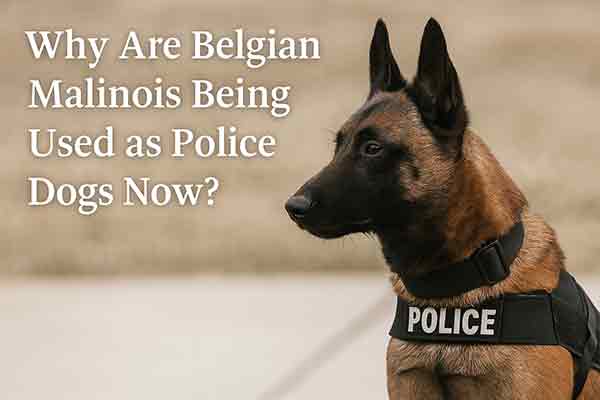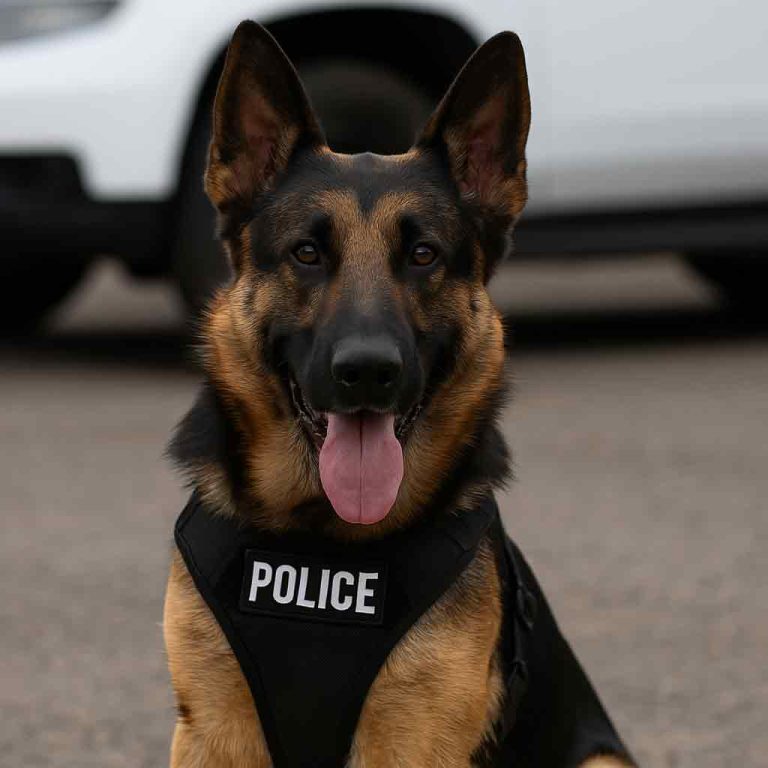Why Are Belgian Malinois Being Used as Police Dogs Now?
Table of Contents
- Introduction
- The Rise of the Belgian Malinois in Law Enforcement
- Breed Overview: What Makes the Belgian Malinois Unique?
- Key Traits That Make Belgian Malinois Ideal for Police Work
- Comparison to Other Police Dog Breeds
- Roles Belgian Malinois Fill in Law Enforcement
- Real-World Examples of Belgian Malinois in Action
- The Training Process: From Puppy to K9 Officer
- Are They the Right Choice for All Police Departments?
- Conclusion
Introduction
In recent years, Belgian Malinois dogs have gained prominence as the go-to breed for police and military K9 units. If you’ve wondered, “Why are Belgian Malinois being used as police dogs now?”, you’re not alone. This breed has rapidly surpassed others in popularity for working roles, and for good reason. This article explores the breed’s characteristics, why law enforcement agencies around the world are choosing them, and what makes them stand out in the field.
The Rise of the Belgian Malinois in Law Enforcement
Once overshadowed by the German Shepherd, the Belgian Malinois has experienced a surge in popularity among law enforcement agencies. From elite military operations like Navy SEAL missions to everyday police patrols, this agile and intelligent breed is proving to be one of the most reliable working dogs today.
Breed Overview: What Makes the Belgian Malinois Unique?
The Belgian Malinois (pronounced MAL-in-wah) is a medium-to-large-sized herding dog developed in Belgium. Often mistaken for a smaller German Shepherd, they’re leaner, more energetic, and have sharper mental acuity. Key traits include:
- Height: 22–26 inches at the shoulder
- Weight: 60–80 pounds
- Lifespan: 12–14 years
- Coat: Short, dense, and weather-resistant
- Temperament: Confident, intelligent, and driven
Key Traits That Make Belgian Malinois Ideal for Police Work
Belgian Malinois are not just smart—they’re purpose-built for demanding roles. Here’s what sets them apart as police dogs:
- High Intelligence: They learn commands and complex tasks quickly.
- Agility: Their light build and muscle tone allow them to move with speed and precision.
- Work Ethic: These dogs thrive on activity and challenge. Boredom often leads to trouble if they aren’t stimulated.
- Loyalty: Malinois form strong bonds with handlers and respond well to disciplined leadership.
- Fearlessness: They’re not easily intimidated, making them ideal for high-risk tasks.
Comparison to Other Police Dog Breeds
How do Malinois compare to traditional police dogs like the German Shepherd or Labrador Retriever?
- German Shepherd: Loyal and strong but slower and prone to hip dysplasia.
- Labrador Retriever: Great for scent detection but not typically used for apprehension.
- Belgian Malinois: Combines speed, scent, and strength—more agile and durable than most.
Roles Belgian Malinois Fill in Law Enforcement
Belgian Malinois are used in a variety of roles within police departments and military units:
- Apprehension: Subduing suspects in chase situations
- Detection: Sniffing out narcotics, explosives, and firearms
- Search and rescue: Locating missing persons with exceptional scent tracking
- Protection: Guarding officers or property
- Patrol: Accompanying officers on routine or high-risk patrols
Real-World Examples of Belgian Malinois in Action
One of the most famous Belgian Malinois was Cairo, the dog who helped Navy SEALs during the mission to take down Osama bin Laden. Cairo’s role included perimeter security and detecting hidden threats.
Police departments across the U.S. and Europe are now favoring the Malinois due to their reliability in drug raids, suspect apprehension, and crowd control.
The Training Process: From Puppy to K9 Officer
Training a Belgian Malinois for police work starts young, often between 6–12 months of age. Key stages include:
- Basic obedience: Sit, stay, heel, recall
- Advanced agility: Navigating obstacles and pursuing suspects
- Specialized training: Scent detection, suspect apprehension, bite work
- Handler bonding: Building trust and responsiveness with a single officer
This intense training prepares Malinois for unpredictable, high-pressure scenarios.
Are They the Right Choice for All Police Departments?
While Belgian Malinois are excellent working dogs, they’re not ideal for every situation. Their energy and drive require experienced handlers and ongoing training. Departments must ensure:
- Proper handler education
- Daily exercise and stimulation for the dog
- A support system for canine retirement or rehoming
Without proper care, their intelligence and energy can lead to destructive behavior or burnout.
Conclusion
Why are Belgian Malinois being used as police dogs now? Because they offer an unmatched combination of speed, smarts, strength, and loyalty. As the demands on K9 units evolve, departments are seeking dogs that can do it all—and the Belgian Malinois fits the bill. When trained and cared for properly, these exceptional dogs become not just law enforcement tools, but irreplaceable partners in service and protection.
For more articles on police dog breeds, training methods, and canine career paths, explore our blog and subscribe for weekly insights.







